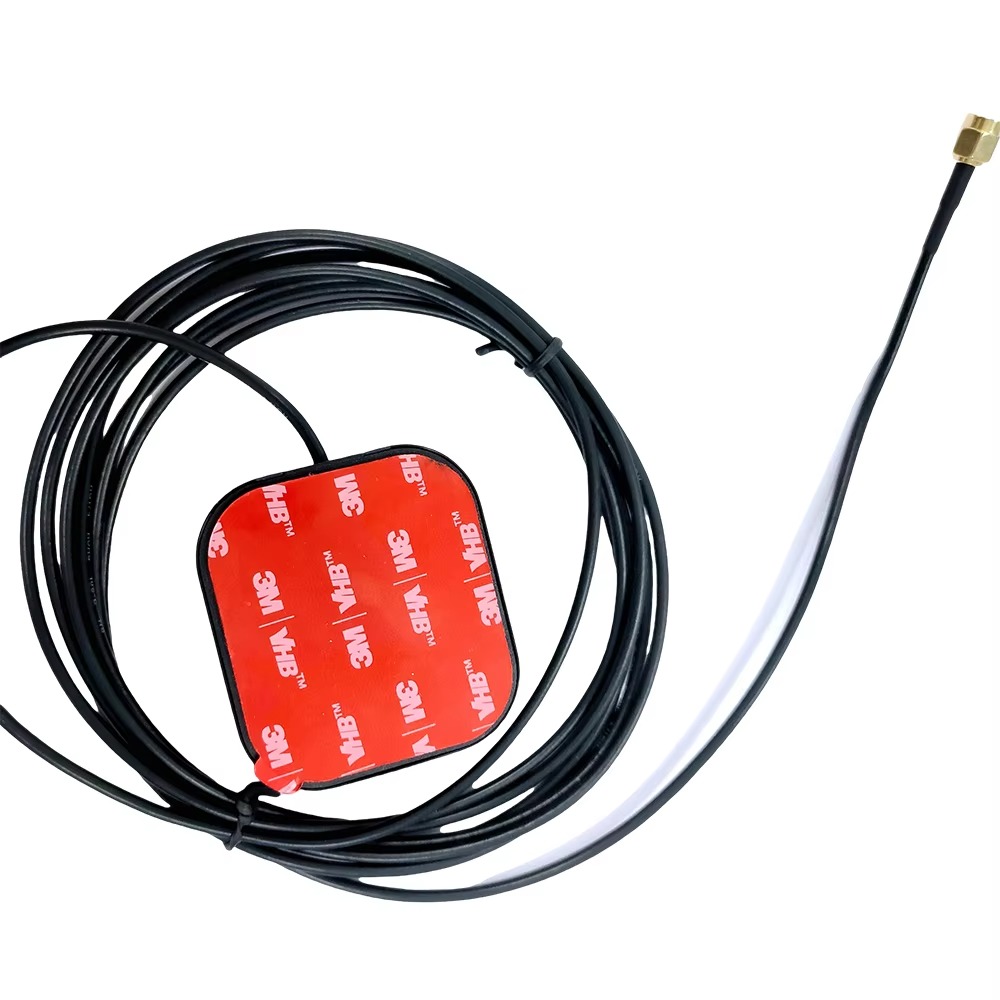The unique capabilities of dual-band RTK GPS antennas have made them indispensable in a wide array of fields that demand high precision, reliability, and efficiency. The technology is also rapidly evolving, driven by new satellite signals and emerging applications.
Applications:
Precision Agriculture: This is one of the largest markets. RTK guides tractors for auto-steering, enabling sub-inch pass-to-pass accuracy. This eliminates overlaps and gaps in planting, spraying, and harvesting, leading to massive savings in seed, fertilizer, fuel, and time. It also enables yield mapping and variable rate application.
Construction and Earthmoving: Grade control systems on bulldozers, excavators, and graders use RTK to guide blades and buckets to the exact design elevation and position. This eliminates the need for traditional survey stakes, reduces rework, and allows projects to be completed faster and with less material.
Surveying and Mapping: The traditional application. Surveyors use RTK for high-accuracy cadastral surveys, topographic mapping, construction layout, and GIS data collection. It has dramatically increased the speed and reduced the crew size needed for most surveying tasks.
Unmanned Aerial Vehicles (UAVs) and Drones: RTK is integrated into drones for photogrammetry and LiDAR mapping. It provides precise geotagging for each captured image and, crucially, allows for precise camera position and orientation, which improves the accuracy of the resulting 2D orthomosaics and 3D models without the need for numerous ground control points.
Autonomous Vehicles and Robotics: While still developing, high-precision positioning is a fundamental requirement for any outdoor autonomous system, from self-driving cars and trucks to port automation and agricultural robots. RTK provides the absolute position needed to localize the vehicle within a high-definition map.
Scientific Research: Used in geophysics for monitoring tectonic plate movements, volcanology for detecting ground deformation, and hydrology for studying land subsidence and sea level rise. The long-term stability and precision are key here.
Marine and Hydrographic Survey: For precision dredging, port construction, and underwater mapping, RTK provides the precise positioning for the vessel and the sonar equipment.
Future Trends:
Multi-Band, Multi-Constellation (MBC): The future is moving beyond dual-band. New systems like Galileo transmit on E6, and modernized GPS is adding L5. "Tri-band" or multi-band antennas and receivers that can leverage all these signals will offer even faster convergence, better robustness, and higher accuracy, further mitigating errors and improving performance in challenging environments.
Tighter Sensor Integration: RTK will not work in tunnels, under dense foliage, or in urban canyons. The future lies in deeply coupling GNSS with other sensors like Inertial Measurement Units (IMUs), LiDAR, cameras, and wheel odometry. The GNSS provides absolute position when available, and the inertial sensors "dead reckon" through short outages, providing continuous, seamless positioning.
Miniaturization and Reduced Power Consumption: As technology advances, dual-band modules are becoming smaller, cheaper, and more power-efficient. This will open up new applications in consumer electronics, wearable technology, and small-form-factor IoT devices.
Advanced Anti-Jamming and Anti-Spoofing (AJAAS): As society becomes more dependent on GNSS, protecting it becomes paramount. Future antennas will incorporate controlled radiation pattern arrays (CRPAs) that can actively nullify jamming signals and detect spoofing attacks, making systems far more secure and resilient.
PPP-RTK: A fusion of Precise Point Positioning (PPP) and RTK concepts. PPP uses precise satellite orbit and clock corrections from a global network to achieve decimeter-to-centimeter accuracy without a local base station. PPP-RTK also transmits ionospheric and other atmospheric models, allowing for much faster convergence and ambiguity resolution. This technology could eventually provide global centimeter-level accuracy without the need for a local base station, revolutionizing the industry.
Cloud Processing and GNSS Networks: The processing is moving from the receiver itself to the cloud. Raw data from a simple receiver can be sent to a cloud server that has access to massive correction networks, performs the complex computations, and sends back a precise position. This could lower the cost and complexity of rover units.
6. Conclusion: The Pivotal Role in a Precise Future
The dual-band RTK GPS antenna is a masterpiece of modern engineering that sits at the critical intersection of hardware and software, physics and computation. It is the unsung enabler that transforms the inherently noisy and error-prone signals from a constellation of distant satellites into a rock-solid, centimeter-accurate truth on the ground.
Its value is not merely in its ability to receive signals, but in its meticulously engineered capacity to do so with unparalleled fidelity, stability, and purity. From the physics of its stacked patch element and the electronics of its low-noise amplifier to the precision of its calibrated phase center, every aspect is optimized for one goal: to deliver a perfect carrier phase measurement. This pristine data is the essential raw material that allows the sophisticated RTK algorithm to perform its magic of resolving integer ambiguities and eliminating atmospheric errors.
While challenges of cost, complexity, and vulnerability remain, the advantages it provides—unmatched accuracy, robustness, and speed—are so transformative that they have created entire industries and redefined best practices in many others. From guiding tractors across vast fields to steering bulldozers on construction sites and enabling the precise navigation of autonomous machines, the dual-band RTK antenna is a foundational technology of the fourth industrial revolution.
Looking forward, its evolution is certain. The trends towards multi-band support, tighter sensor fusion, enhanced security, and cloud-based processing point to a future where high-precision positioning becomes more accessible, more reliable, and more ubiquitous than ever before. It will cease to be a specialized tool and become an invisible utility, seamlessly integrated into the fabric of our automated world. The humble antenna, often overlooked as a simple piece of hardware, will continue to be the critical gateway upon which our increasingly precise and autonomous future is built.




































































 Language
Language
 En
En Cn
Cn Korean
Korean

 Home >
Home > 







 18665803017 (Macro)
18665803017 (Macro)













